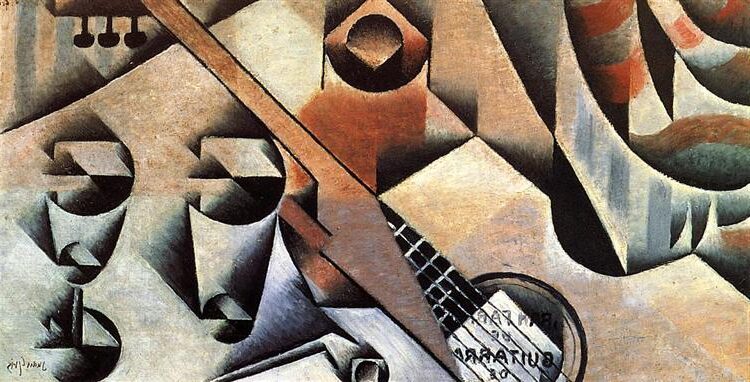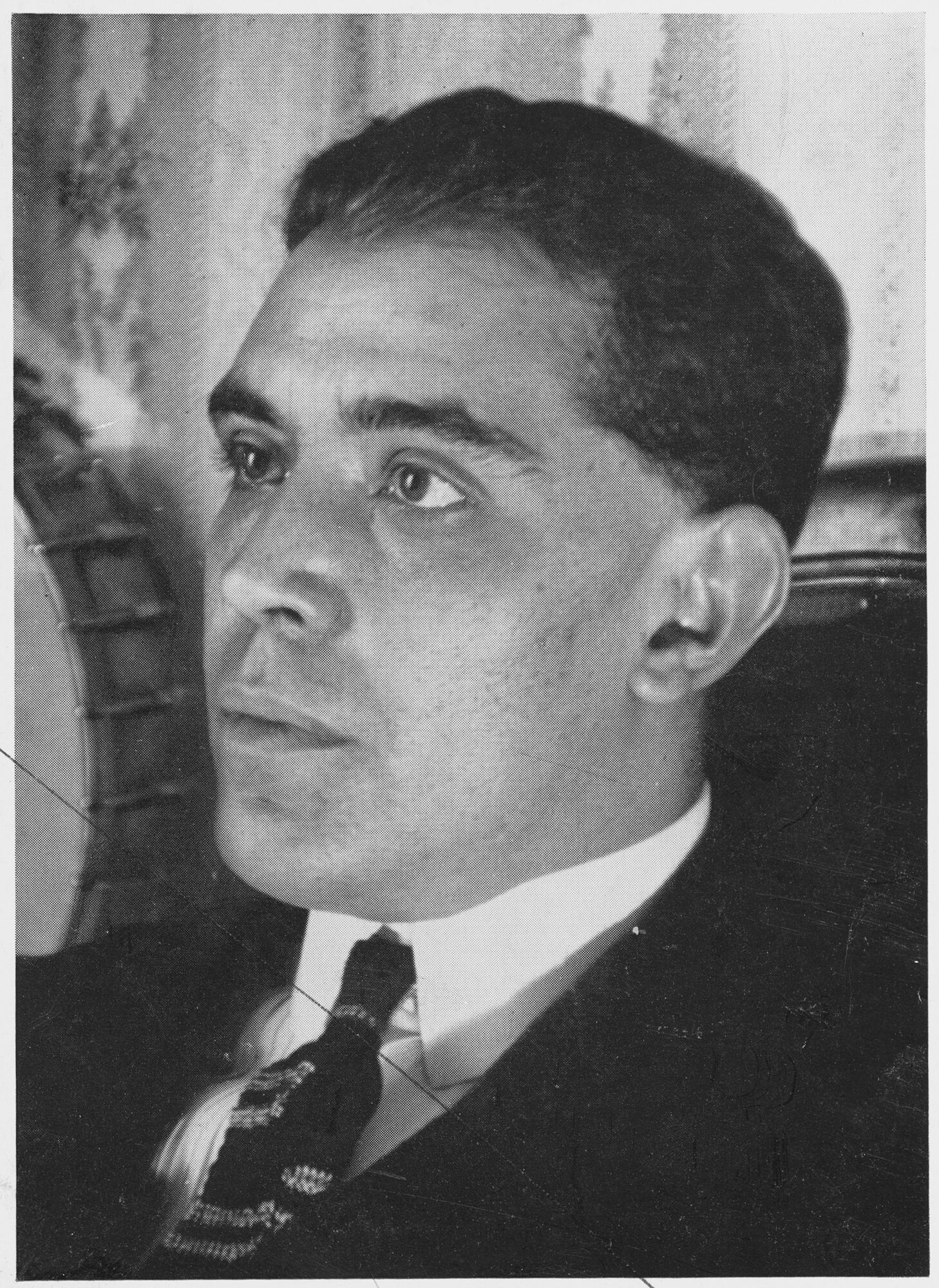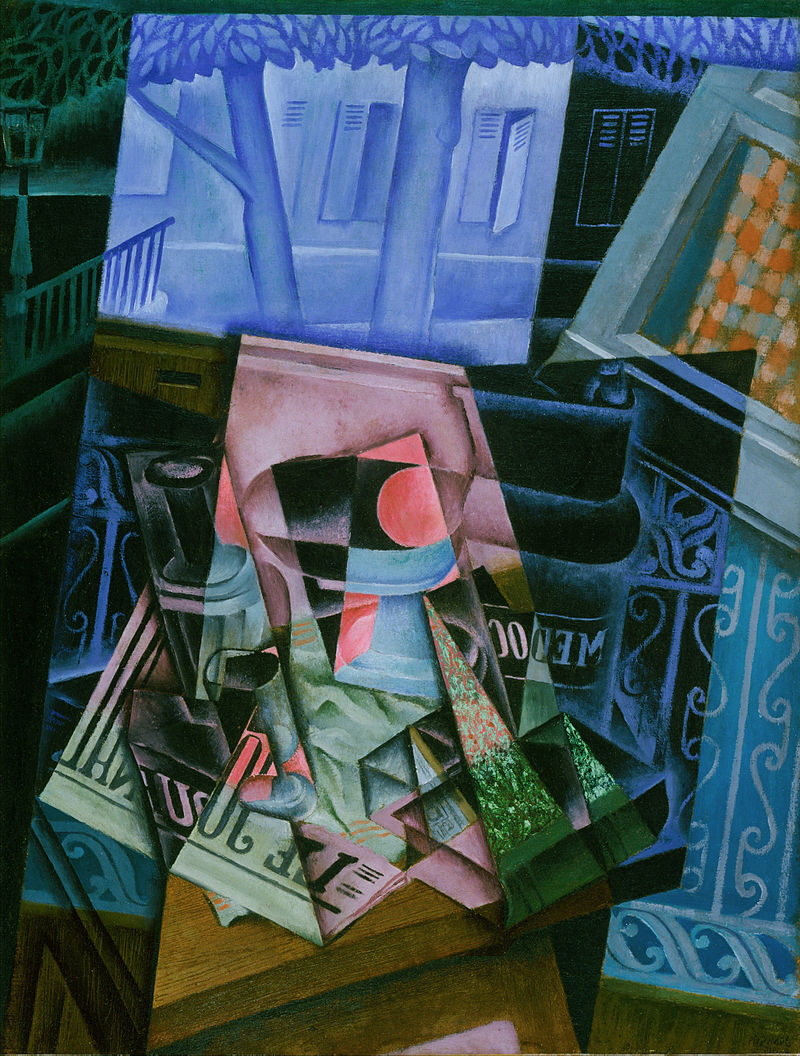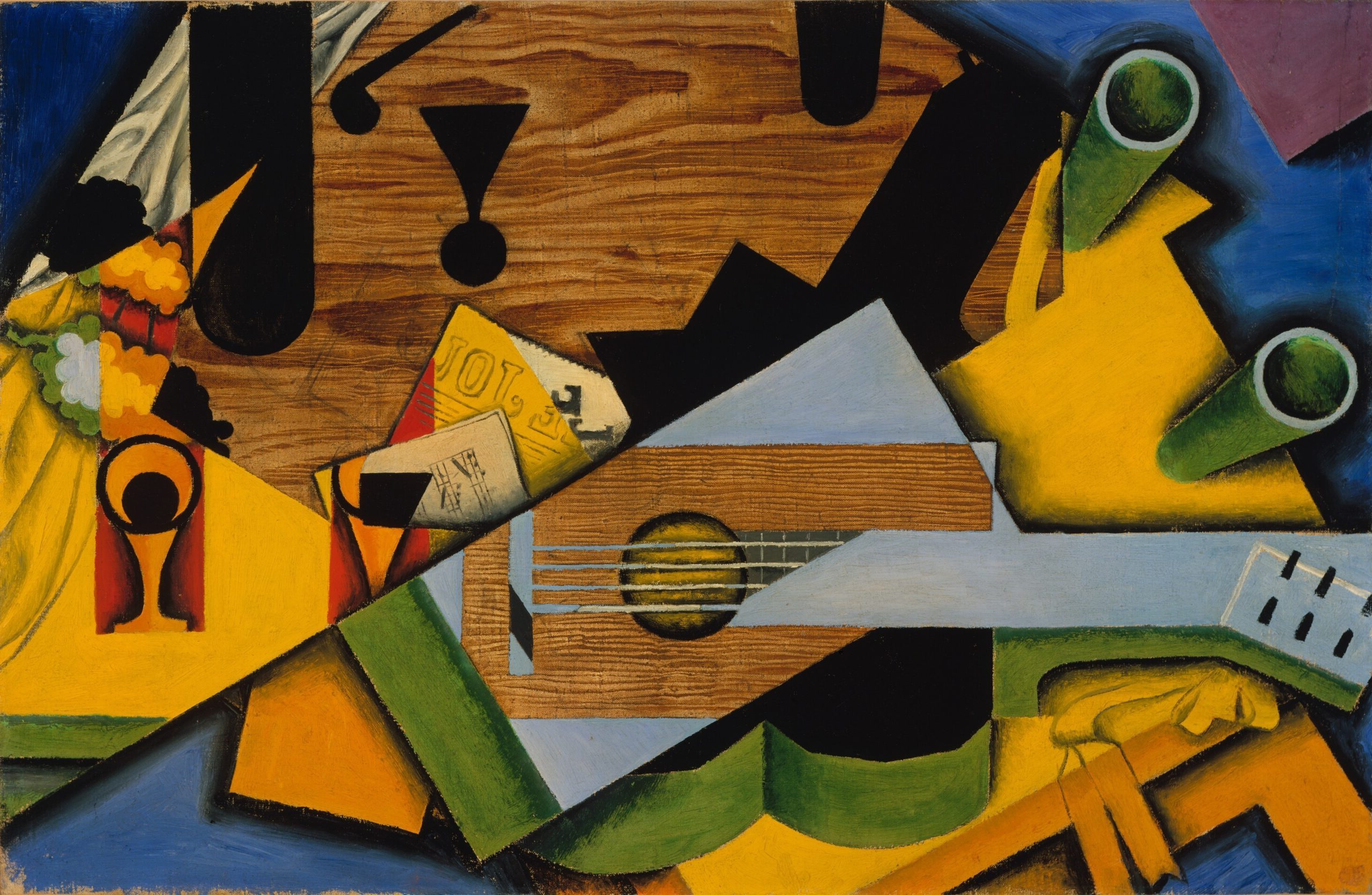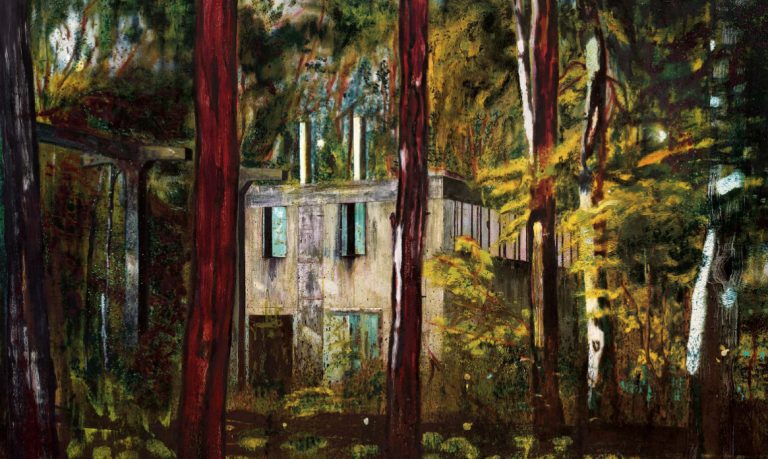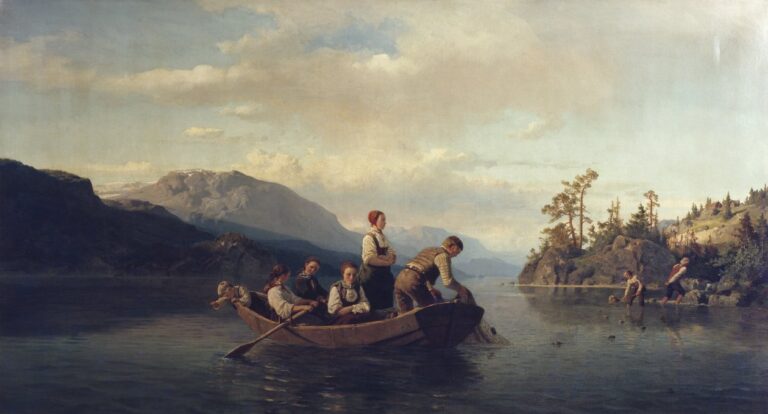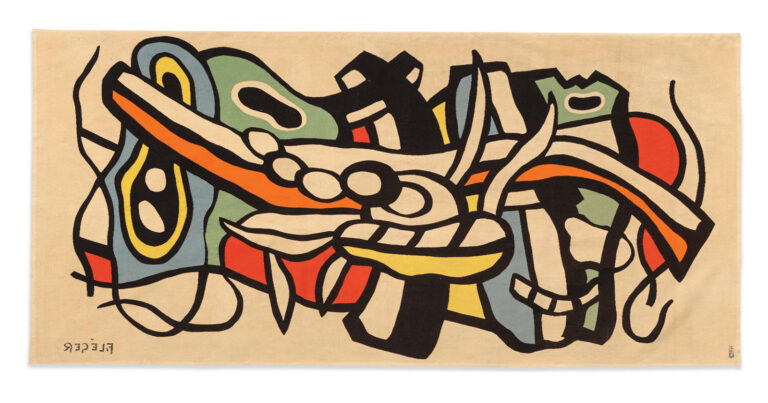Juan Gris Painter: A Pioneer of Synthetic Cubism and His Artistic Legacy
Born: March 23, 1887, Madrid, Spain
Death: May 11, 1927; Paris, France
Art Movement: Cubism
Nationality: Spanish
Teacher: José Moreno Carbonero
Institution: Madrid School of Arts and Sciences
Juan Gris Painter: A Pioneer of Synthetic Cubism and His Artistic Legacy
Life and Artistic Milestones
Juan Gris lived a relatively short but intensely creative life that transformed modern art. His journey from Madrid to becoming a key figure in Cubism illustrates his remarkable artistic evolution and resilience through personal challenges.
Early Life and Education in Madrid
José Victoriano González-Pérez, later known as Juan Gris, was born on March 23, 1887, in Madrid, Spain. His artistic talent emerged early in his youth.
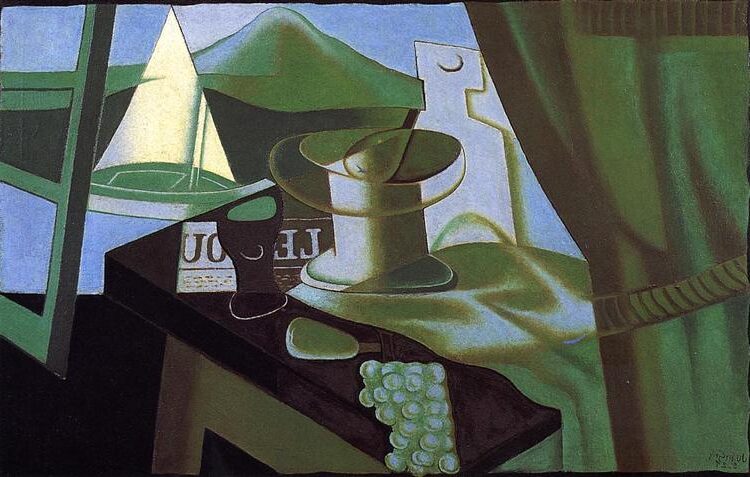
The Bay (1921) by Juan Gris
In Madrid, he studied engineering drawing at the Escuela de Artes y Manufacturas from 1902 to 1904. Unsatisfied with conventional academic training, Gris developed a keen interest in illustration.
Before leaving Spain, he contributed cartoons and illustrations to various local publications. These early works showed his precise draftsmanship and eye for composition.
In 1906, at age 19, Gris made the pivotal decision to leave Madrid for Paris. This move would transform his artistic vision and place him at the center of the European avant-garde movement.
Parisian Influence and Friendship with Picasso
Upon arriving in Paris, Gris settled in Montmartre at the famous Bateau-Lavoir, a dilapidated building housing numerous artists. This location proved crucial for his artistic development.
Here, he met Pablo Picasso, who became a significant influence and friend. Though initially working as an illustrator to support himself, Gris began serious painting around 1910.
His early Cubist works showed remarkable mathematical precision and structure. Unlike Picasso and Braque’s more spontaneous approach, Gris carefully planned his compositions with a more systematic method.
By 1912, he had developed his distinctive style, using bright colors and precise geometric forms. His first solo exhibition at Galerie Léonce Rosenberg in 1912 established him as a major Cubist artist.
Collaborations and the Avant-Garde Scene
Gris became deeply involved in Paris’s vibrant avant-garde community. He formed connections with influential figures including Gertrude Stein, who became an important collector and supporter of his work.
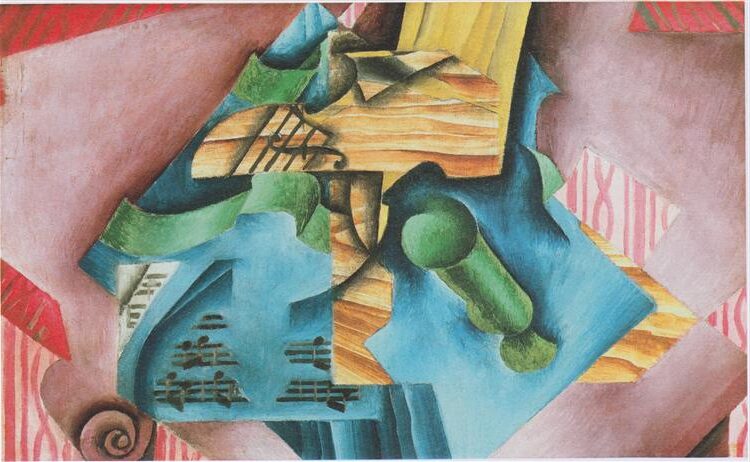
Violin and Glass (1913) by Juan Gris
During this period, he experimented with collage and papier collé techniques, adding new dimensions to Cubism. His innovative still lifes featured everyday objects rendered with precision and harmony.
In the 1920s, Gris collaborated with Sergei Diaghilev’s Ballets Russes, designing costumes and sets for performances. These projects allowed him to extend his artistic vision beyond canvas to theatrical design.
His wife, Lucie Belin, provided stability during these productive years. Together they had a son, Georges Gonzalez-Gris, completing his family life while his professional career flourished.
Personal Setbacks and Declining Health
World War I brought significant hardships to Gris. As a Spanish citizen, he wasn’t drafted but faced material shortages and isolation from the art market.
Despite these challenges, the war years saw Gris refine his artistic approach. His work became more colorful and synthetic, moving away from analytical Cubism.
By 1920, his health began deteriorating seriously. He suffered from kidney failure and respiratory problems that progressively limited his ability to work.
Gris continued creating art despite his declining health. He settled in Boulogne-sur-Seine, where he produced some of his most harmonious and balanced compositions during his final years.
On May 11, 1927, Juan Gris died at only 40 years old. Though his career lasted barely two decades, his innovative approach to Cubism secured his place as one of the movement’s most significant contributors.
Artistic Evolution and Theoretical Contributions

Still Life with a Guitar (1913) by Juan Gris
Juan Gris developed a distinctive approach to Cubism that emphasized precision, harmonious colors, and mathematical order. His artistic journey evolved from early analytical experiments to a refined synthetic style that would significantly influence modern art movements.
Development of Personal Cubist Style
Juan Gris arrived in Paris in 1906 and initially worked as an illustrator before embracing Cubism around 1911. Unlike Picasso and Braque, Gris approached Cubism with mathematical precision and systematic methodology.
His early works showed a careful study of form through geometric shapes and muted colors. By 1912, Gris had developed his distinctive style characterized by bright harmonious colors and clear architectural compositions.
The “Portrait of Picasso” (1912) marked a pivotal moment in his career, demonstrating his unique approach to Cubist portraiture with its balanced composition and recognizable subject matter. Unlike his contemporaries, Gris typically began with an abstract concept and worked toward the object, rather than fragmenting an existing object.
His use of geometric shapes became increasingly sophisticated, creating a sense of rhythm and order that distinguished his work from other Cubist painters.
The Role of Synthetic Cubism and Collage
Gris made significant contributions to Synthetic Cubism through his innovative use of papier collé (pasted paper) and collage techniques. He elevated these methods beyond mere experimentation to become central aspects of his artistic vocabulary.


His collages incorporated everyday materials like newspaper clippings, wallpaper, and sheet music, integrating them seamlessly into his compositions. Gris approached collage with exceptional precision, using these elements to create textures and spatial relationships impossible to achieve through paint alone.
“Still Life with Checked Tablecloth” (1915) exemplifies his mastery of the technique, combining painted areas with collage elements to create a harmonious whole. His collages weren’t random assemblages but carefully constructed compositions.
Gris wrote, “Mine is an art of synthesis, of deduction,” highlighting his methodical approach. His collages reflected his belief that art should reconstruct reality according to conceptual principles rather than visual appearance.
Influence on and from Modern Art Movements
Gris both influenced and was influenced by various contemporary art movements. His precise geometric approach and use of bright colors impacted the development of Purism and Art Deco after World War I.
His friendship with Fernand Léger led to mutual influence, particularly in their treatment of cylindrical forms and mechanical elements. Gris’s theoretical writings on art, particularly his 1921 lecture “On the Possibilities of Painting,” provided important insights into Cubist philosophy that influenced subsequent artists.
By the early 1920s, Gris’s style incorporated elements of Classicism while maintaining Cubist principles. This synthesis appealed to collectors and influenced younger artists seeking to balance modernist approaches with traditional order.
His work bridged pure abstraction and representational art, making him a pivotal figure for artists exploring this territory in the decades that followed. Unlike some contemporaries, Gris maintained that objects in art should remain recognizable despite fragmentation.
Major Exhibitions and Later Works
Gris signed an exclusive contract with art dealer Léonce Rosenberg in 1916, leading to his first solo exhibition at Galerie L’Effort Moderne in 1919. This show established him as a major figure in the Parisian art scene.

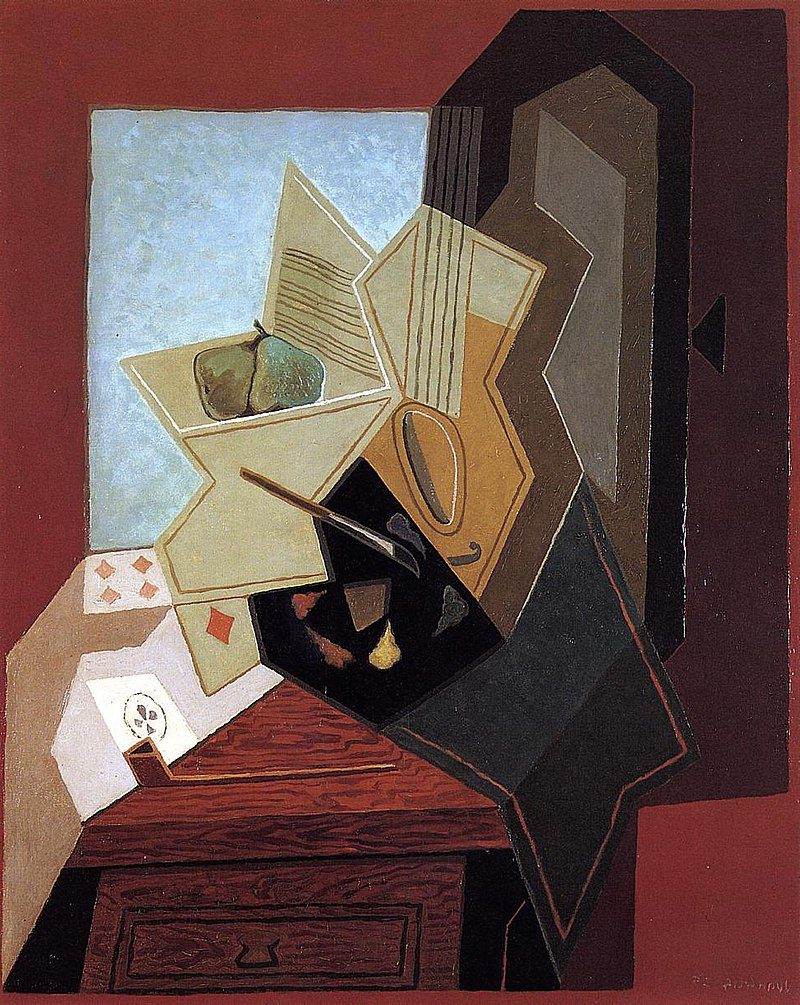
His later works from 1919-1927 reveal a shift toward more harmonious compositions with simplified forms and brighter colors. “Still Life before an Open Window” (1921) exemplifies this mature period with its balanced composition and luminous palette.
In 1923, Gris exhibited at Galerie Simon in Paris and Galerie Flechtheim in Berlin, expanding his international reputation. His final works showed increasing interest in depicting musical instruments and still lifes with flowers.
Despite his declining health in the 1920s, Gris continued to refine his theories and practice. His last major works maintained extraordinary precision while achieving new levels of poetic expression.
Legacy and Impact on Modern Art
Juan Gris left an indelible mark on the art world that continues to resonate today. His distinctive approach to Synthetic Cubism created a visual language that influenced generations of artists and movements long after his death in 1927.
Posthumous Recognition and Museums
The Metropolitan Museum of Art houses several important Juan Gris works, including his famous “Still Life with Checkerboard” (1915). After his death, Gris’s reputation grew steadily through retrospectives that highlighted his precision and mathematical approach to Cubism.

The Three Masks (1923) by Juan Gris
Major institutions including the Reina Sofia Museum in Madrid and Centre Pompidou in Paris maintain significant collections of his work. His paintings now command impressive prices at auction, with some pieces fetching millions of dollars.
The Museum of Modern Art in New York organized a landmark Gris exhibition in 1958, cementing his position as a cubist master distinct from Picasso and Braque. This exhibition helped scholars reassess his contributions beyond being merely a “follower” of his contemporaries.
Influence on Future Art Movements and Artists
Gris’s methodical approach and bold color palette influenced the Precisionist movement in America during the 1920s and 1930s. Artists like Charles Demuth and Charles Sheeler adapted his structured compositional techniques.
His work bridged Cubism with later movements including Pop Art, where his flat planes of color and incorporation of everyday objects found new expression. Roy Lichtenstein particularly admired Gris’s ability to balance abstraction with recognizable imagery.
Abstract artists appreciated Gris’s mathematical precision and harmonious compositions. His careful balance between abstraction and representation provided a template for artists navigating similar tensions in their work.
Contemporary painters continue to study his techniques for creating depth through overlapping transparent planes rather than traditional perspective.
Artistic Innovations and Ongoing Relevance
Gris’s major innovation was developing Synthetic Cubism beyond what Picasso and Braque had established. He introduced vibrant colors and precise geometric structure at a time when the movement emphasized more subdued tones.
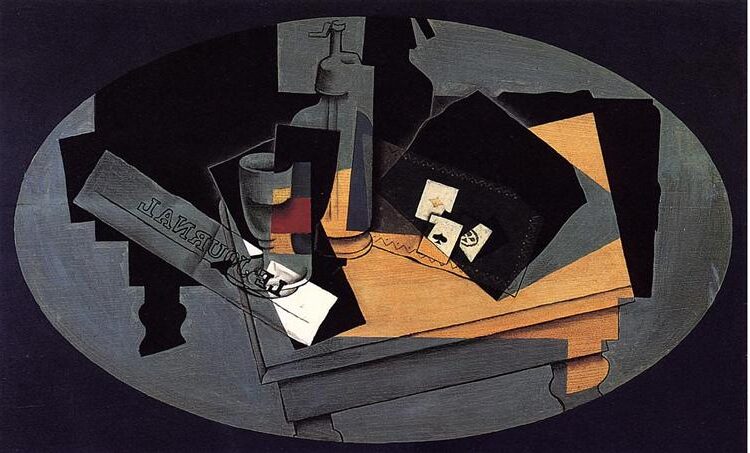
Playing Cards and Siphon (1916) by Juan Gris
His “Harlequin” paintings became iconic for their blend of mathematical precision and poetic sensibility. These works demonstrated how abstraction could convey emotion while maintaining compositional rigor.
Gris was among the first avant-garde artists to thoughtfully integrate text and collage elements into fine art paintings. This technique became fundamental to 20th-century artistic development.
His work remains relevant because it offers a bridge between representational art and pure abstraction. Contemporary critics continue to discover new dimensions in his carefully constructed paintings, finding them remarkably modern despite being created over a century ago.
Frequently Asked Questions
Juan Gris left an enduring legacy in the art world through his distinctive approach to Cubism and his innovative techniques. His work continues to inspire art enthusiasts and scholars who explore his contributions to modern art.
What are the defining characteristics of Juan Gris’s painting style in the Cubist movement?
Juan Gris developed a distinctive style within Cubism characterized by precise composition and harmonious color schemes. He favored geometric simplification and flat, overlapping planes that created a sense of order.
His paintings feature carefully planned structures, often based on mathematical proportions. Unlike Picasso and Braque’s earlier Cubist works, Gris used brighter colors and clearer forms.
Gris also incorporated collage elements and trompe l’oeil techniques that blurred the line between representation and abstraction. His still lifes typically included everyday objects like guitars, bottles, and newspapers arranged in balanced compositions.
How did Juan Gris contribute to the development of Synthetic Cubism?
Gris was instrumental in advancing Synthetic Cubism, the second phase of the Cubist movement. He introduced a more systematic approach than his predecessors, focusing on colorful, decorative elements rather than just analytical deconstruction.
He pioneered the use of papier collé (pasted paper) techniques alongside painted elements to create rich textures. His method involved starting with a clear idea of the final composition rather than breaking objects down incrementally.
Gris emphasized color relationships to create spatial depth, using vibrant hues that became a hallmark of Synthetic Cubism. His precisely constructed paintings helped establish Synthetic Cubism as a coherent aesthetic style.
Can you describe the evolution of Juan Gris’s artistic techniques throughout his career?
Gris’s early work showed influences of Analytical Cubism with its muted palette and fragmented objects. Between 1912 and 1915, he developed his signature approach to Synthetic Cubism with brighter colors and simpler forms.
His middle period featured increasingly complex compositions with overlapping planes and sophisticated color relationships. He experimented with papier collé and collage techniques, introducing real materials like newspaper and wood veneer.
In his later years, Gris moved toward more lyrical and simplified forms. His post-1920 work showed greater integration of figure and ground, with smoother transitions between forms. His final paintings featured a classical sense of harmony while maintaining Cubist principles.
Which of Juan Gris’s works are considered masterpieces, and why?
“Still Life with Checkered Tablecloth” (1915) is considered a masterpiece for its perfect balance of geometric abstraction and recognizable objects. Its harmonious color scheme and integrated composition exemplify Gris’s mature style.
“Portrait of Pablo Picasso” (1912) demonstrates Gris’s unique approach to portraiture within Cubism. The painting shows respect for his mentor while establishing Gris’s independent artistic voice through its architectural structure.
“The Guitar Player” (1914-1915) brilliantly combines multiple viewpoints and geometric forms while maintaining visual coherence. “Violin and Guitar” (1913) showcases his masterful use of collage techniques and subtle color relationships.
“Still Life before an Open Window” (1915) is celebrated for its successful integration of interior and exterior spaces. This work exemplifies Gris’s ability to create complex spatial relationships while maintaining harmony.
What was the influence of Juan Gris’s work on other artists and subsequent art movements?
Gris’s methodical approach and architectural compositions influenced the Purism movement led by Amédée Ozenfant and Le Corbusier. His emphasis on structure and precision appealed to artists seeking order after World War I.
His work impacted Art Deco design through its geometric simplification and decorative qualities. The clean lines and balanced compositions in his paintings translated effectively to commercial design and architecture.
Gris influenced abstract artists like Piet Mondrian through his logical approach to composition. His theoretical writings about art also provided intellectual foundations for later movements, including aspects of Constructivism and Minimalism.
How did the socio-economic context of early 20th-century Europe shape Juan Gris’s artistic output?
World War I severely affected Gris’s circumstances. It created financial hardship and material shortages. These constraints led him to experiment with different techniques and more economical approaches to art-making.
The interwar period’s return to order influenced Gris’s later work. His later work became more classical in composition. His Spanish heritage provided him a unique perspective within the predominantly French-centered Parisian art scene.
Gris’s relationships with art dealers and collectors shaped his professional trajectory. He had a unique Spanish perspective within the predominantly French-centered Parisian art scene.
His poor health and relatively early death at age 40 limited his output. This contributed to his somewhat lesser recognition compared to other Cubists.

